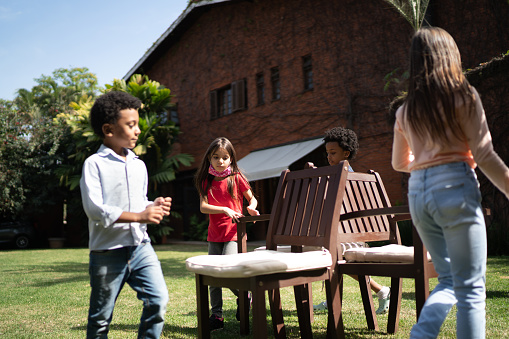Musical Chair

A set of chairs is arranged with one fewer chair than the number of players (for example, seven players would use six chairs). While music plays, the contestants walk around the set of chairs. When the music stops abruptly, all players must find their own individual chair to occupy. The player who fails to sit on a chair is eliminated.[1] A chair is then removed for the next round, and the process repeats until only one player remains and is declared the winner. In Wales, musical chairs had a similar custom to the modern version, with slight differences; the boys would always sit whilst the girls would skip around, always outnumbering the boys, if the a girl didn't sit fast enough on the boy's lap, she would have to forfeit, this would continue until the end when the winning girl would kiss the last boy on the cheek In the musical Evita, during the song "The Art of the Possible", Juan Perón and a group of other military officers play a game of musical chairs which Perón wins, symbolizing his rise to power. In the historical drama Dara of Jasenovac, prisoners of the Jasenovac concentration camp are forced to play.


